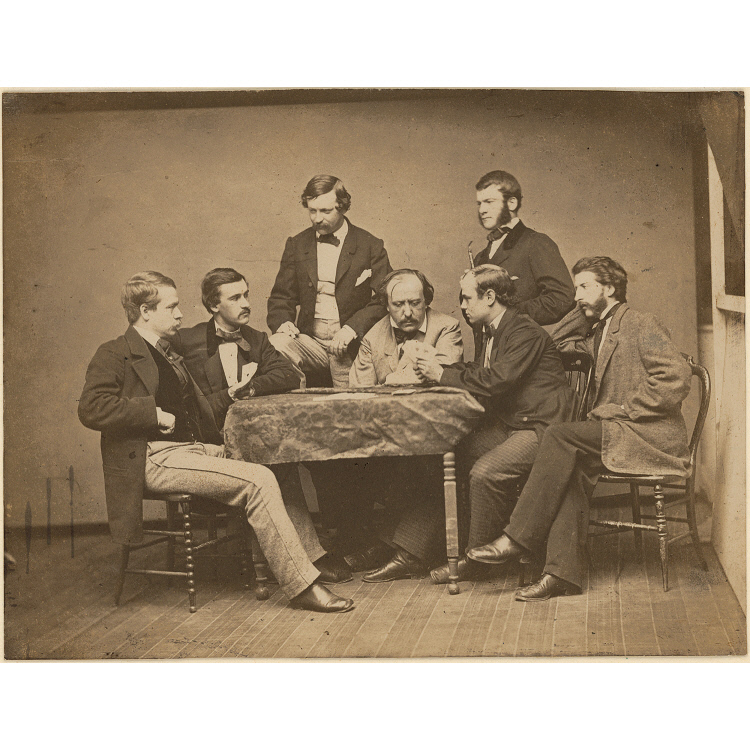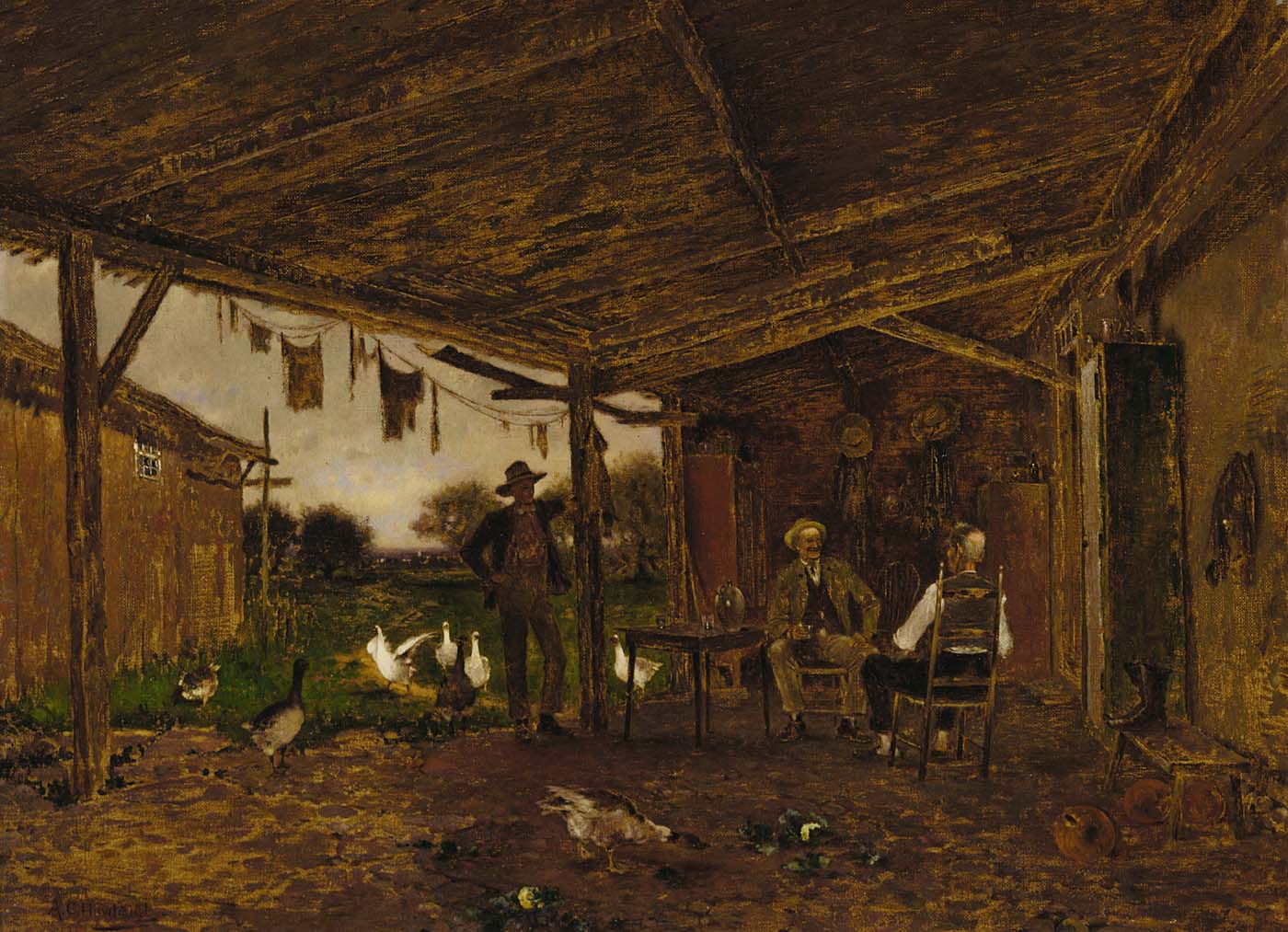Alfred Cornelius Howland
Alfred Howland was descended from seven generations of New Englanders, the first of whom came as an indentured servant on the Mayflower. Howland's grandfather settled in Walpole, New Hampshire, where Howland grew up in a Greek Revival house that his builder-father had constructed. The son began his training as a lithographer in Boston in 1857, went to Düsseldorf in 1859 to study at the Royal Academy as well as privately, and then to Paris to work with Emile Lambinet and the Barbizon painters. He returned to live in Boston, spending ten summers in Williamstown, Massachusetts. Best known for his genre paintings, Howland also executed landscapes and portraits, or a combination of all three, as in The Old Yale Fence (1889–90), which contains portraits of numerous Yale sportsmen lounging against a fence with the campus in the background. He derived his style from Camille Corot, Theodore Rousseau, and Jean François Millet, all of whom were his friends, adapting some of their approaches to painting light and nature to his New England subjects. Howland's paintings invariably focused on the rustic New England countryside and its inhabitants, depicting farmers, Fourth of July paraders in their old fashioned clothing, and rearranging locally identifiable buildings to suit his boyhood memories.
William H. Truettner and Roger B. Stein, editors, with contributions by Dona Brown, Thomas Andrew Denenberg, Judith K. Maxwell, Stephen Nissenbaum, Bruce Robertson, Roger B. Stein, and William H. Truettner Picturing Old New England: Image and Memory (Washington, D.C.; New Haven, Conn; and London: National Museum of American Art with Yale University Press, 1999


